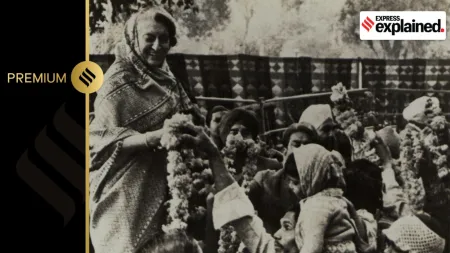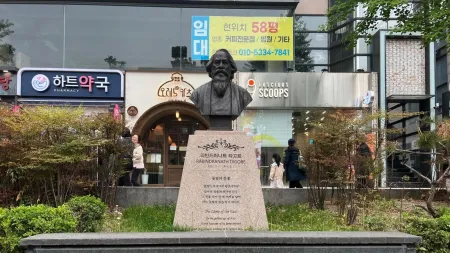- India
- International
Know Your Monument: Hawa Mahal, more than just a breezy affair
In the seventh edition of this series on Indian monuments by Sahapedia, we look at Jaipur's exquisite Hawa Mahal. The 18th-century Palace of Winds is a rose-tinted example of the Pink City's architectural splendour. However, as popular a visual the lattice window-ed façade may be, there is still much about this 87-feet tall monument that many don't know.
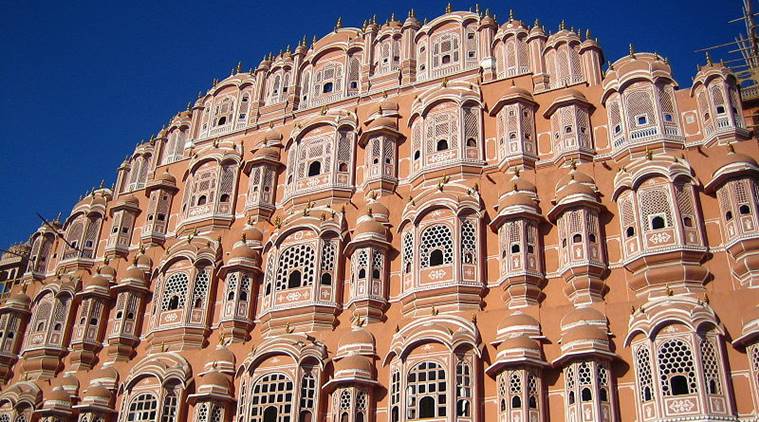 Hawa Mahal (Source: Psychocadet/Wikimedia Commons)
Hawa Mahal (Source: Psychocadet/Wikimedia Commons)
By Samayita Banerjee
The majestic Hawa Mahal, or the Palace of Winds, is often the first visual that comes to mind when one thinks of the Rajasthani capital of Jaipur. The ‘pink city’, as Jaipur is popularly known, presents a beautiful marriage of history, heritage and architectural splendour, with the rose-tinted sandstone Hawa Mahal standing tall among one of the most visited and unique monuments. However, not many know that the 300-plus jharokhas (portholes) that form the very memorable façade of the monument and attracts tens of thousands of tourists from around the world each year, is actually its back side. Moreover, even the front façade doesn’t serve as a direct entrance, and one has to enter from the side of the City Palace, of which it is a part.
Located in Badi Chaupar (large square), in Jaipur’s Old Town, the impressive Hawa Mahal is highly regarded as an architectural marvel and has even been called ‘the standing vision of joyous poetry’ in an ode by IK Sharma, highly regarded as a pioneer of English poetry from Rajasthan.
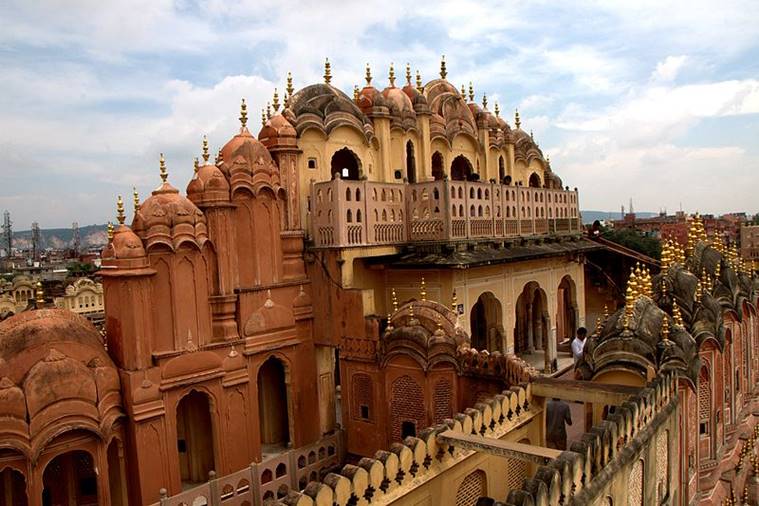 Source: Nirmaldayani/Wikimedia Commons
Source: Nirmaldayani/Wikimedia Commons
‘A Poem in Five Sensuous Stanzas’
Borrowing lines from Sharma’s poem, the Hawa Mahal is indeed a vision over five storeys; its 365 latticed windows offering a splendid view of the city. The honeycomb structure is unique to this 18th-century building that was constructed as a viewing gallery for the women of the royal family of Maharaja Sawai Pratap Singh (r 1764-1803), the grandson of Sawai Jai Singh II. The ornate portholes gave them a vantage point to observe the city life around without being seen themselves. Designed by Lal Chand Ustad in 1799, the inspiration for the monument is said to have come from the Khetri Mahal (also known as the Wind Palace) at Jhunjhunu, Rajasthan.
Rising to a height of over 80 ft, the monument is broader at the base and tapers towards the top. The walls of the pavilion, however, are only 9-inches thick. An amalgamation of Islamic Mughal and Rajput style of architecture, the top part of the structure actually reflects Maharaja Pratap Singh’s devotion for Lord Krishna as it was built to resemble Krishna’s crown. The palace itself is said to be dedicated to Radha and Krishna, with there being a room in each floor dedicated to the god.

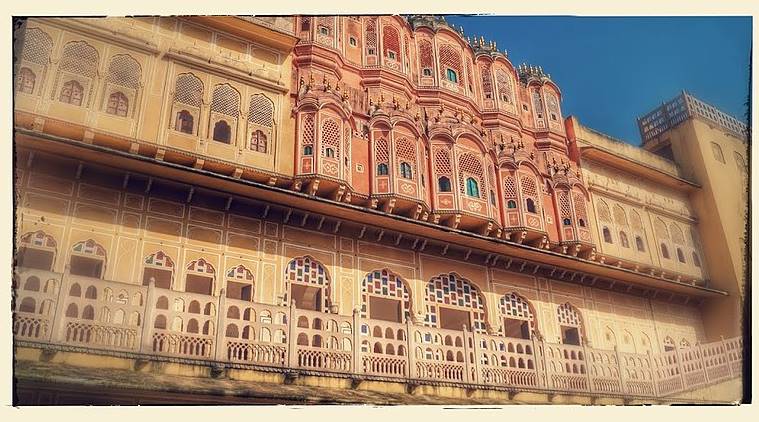 Inside Hawa Mahal (Source: Kishoregaru/Wikimedia Commons)
Inside Hawa Mahal (Source: Kishoregaru/Wikimedia Commons)
The Design Corner
Interestingly, the ornate exteriors of the Hawa Mahal are contrasted with current plain interiors. Although there exist descriptions of the rooms having been decorated with different coloured marbles, relieved by inlaid panels and fountains in the courtyard. The stained glass on windows also ensures a magnificent interplay of light during the day.
While there are several reports doing the rounds that the Hawa Mahal was built without a foundation, this has been rubbished by the authorities. Another aspect of this multi-storeyed building that has often been reported is that all the floors are connected via ramps. While there is some truth to this, as many of the floors do have winding ramps to one side, there are stairs at the other end as well.
The Hawa Mahal acted as a summer retreat for royals at the time, primarily due to the ‘natural’ air conditioning effect caused by the scientific design of the latticed windows. The narrow, double funnel-like shape brought into place the Venturi effect-the phenomenon that occurs when a fluid or gas that is flowing through a pipe is forced through a narrow section, resulting in a pressure decrease and a velocity increase. This has made it an effective tool to beat the summer heat, thereby earning the monument its iconic name-Hawa Mahal. The outer face of each jharokha, apart from intricate jaalis (nets) and miniature windows, have carved grills, finials and miniature domes on sandstone, and in some cases, on wood.
The Ghosts of Hawa Mahal
While Hawa Mahal doesn’t really feature in the popular list of haunted monuments in India, and there don’t seem to be any written records of any paranormal activities, local guides do occasionally mention the ‘presence of Ranis past’. Once such account is during the Teej festival, which was celebrated with much fervour within the palace walls. Some guides talk about hearing the crinkling of anklets and the laughter of women in the windy corridors on the occasion even now.
While these impressions could either be imaginative or even publicity gimmicks, there is no denying that Hawa Mahal is one of Jaipur’s, and India’s, crown jewels in architecture. Currently maintained by the archaeological department of the Government of Rajasthan, it has been restored with help from the Unit Trust of India. The exquisite red-and-white sandstone monument is an elegant example of the beauty and science of Jaipur’s monuments, and for tourists, it’s one of the best places to savour a bird’s eye view of the Pink City.
TRIVIA BOX
The Hawa Mahal has 365 latticed windows or jharokhas at the back-end of the monument, which is its most photographed façade.
There is a small museum within the premises of the Hawa Mahal, which is a must-visit for tourists.
The best time to visit the Hawa Mahal is said to be at sunrise, when the building and skyline are both lit up in the golden glow of the rising sun.
Not many poems are written on monuments, which would make searching for Hawa Mahal, the poem by I K Sharma an interesting exercise.
Entry to the Hawa Mahal is free on four days of the year-Rajastha Diwas (30 March), World Heritage Day (18 April), International Museum Day (18 May) and World Tourism Day (27 September)
(The article is a part of the extensive coverage of India’s monuments and Saha Sutra by http://www.sahapedia.org, an open online resource on the arts, cultures and heritage of India. Sahapedia offers encyclopedic content on India’s vast and diverse heritage in multimedia format, authored by scholars and curated by experts – to creatively engage with culture and history to reveal connections for a wide public using digital media.)
May 10: Latest News
- 01
- 02
- 03
- 04
- 05




